The party John Hume led for a quarter of a century struggled to survive his 2004 retirement, but he is still widely recognised as the most constructive figure of "the Troubles". Reconciliation between nationalists and unionists may be as far off as ever, the SDLP an also-ran. Yet the only framework convincingly proposed for a lasting settlement, centred on equality for Irish and British identities through power-sharing with a formal involvement of Britain and the Republic, was substantially Hume's prescription.
Though his persistence irked some in both capitals, in the judgment of many observers, Hume’s determination that the voice of anti-violence nationalism be heard over the noise of war kept London and Dublin up to the mark. His talent as a lobbyist swung Irish-American opinion-formers against support for the IRA and enlisted them to urge economic investment in Northern Ireland. At crucial moments, Washington influence on British administrations and Northern politicians helped sustain a lasting, if imperfect, peace.
A 32-year-old ex-teacher newly-employed in a small smoked-salmon business, Hume had already made a stir in the stagnant nationalism of the 1960s, before election as an independent to the Stormont parliament in February 1969, in the heat of the civil rights campaign. But initially his energies were directed into the establishment of a credit union, and a housing group sponsored by a local priest. Having seen his mother and her sisters borrowing from loan sharks and pawnbrokers to eke out their husbands’ dole and their own “shirt-money” as seamstresses, he helped set up a Derry credit union in 1960 and travelled Ireland promoting the idea. He joined the campaign to bring Northern Ireland’s second university to Derry (stymied by the unionist government decision to give it to Protestant Coleraine instead), then housing activism.
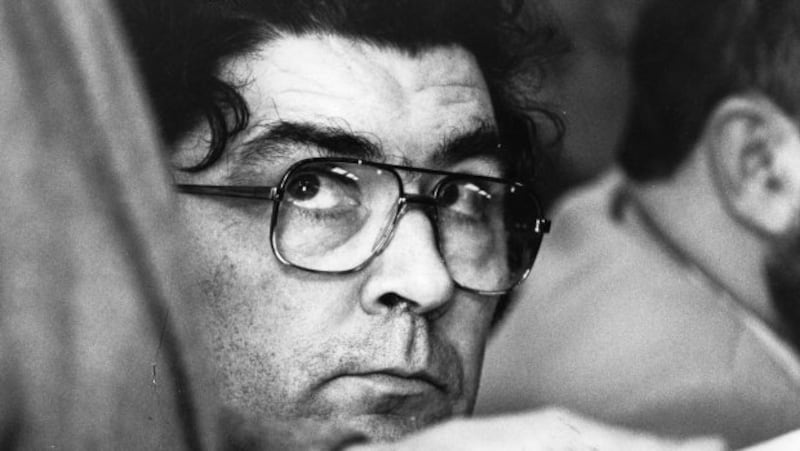
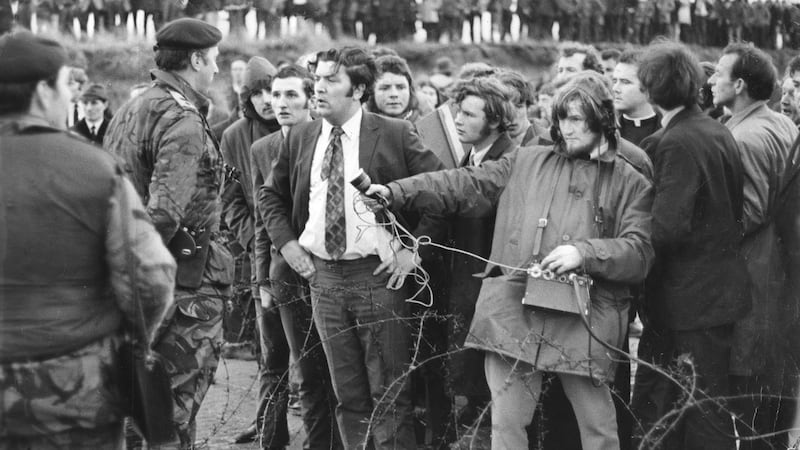
He had grown up in a sullen community subdued by gerrymander and discrimination, hankering after a united Ireland to which the independent Republic across the border paid only lip service, tempted every decade to give at least covert support to an ineffectual IRA. The Catholic Church was for most the centre of an alienated state within a state. In Derry, as elsewhere, housing allocation was controlled at local council level, in effect by the unionist mayor of the city. Eddie McAteer’s Nationalist Party railed impotently against Stormont’s permanent majority, and made empty threats to appeal to the “court of international opinion”. The city’s Catholic majority was crammed into one ward with eight seats on Derry Corporation, the much smaller Protestant community spread over two wards had 12. The overcrowded South Ward by the early 1960s had no remaining suitable land. Tuberculosis was rife, emigration high.
A housing association set up by the energetic Fr Anthony Mulvey in 1965 asked Hume to be chairman. In the first year, they housed 100 families by creating flats in large old houses. When they tried instead to build, they were refused planning permission. Hume described in an RTÉ profile in the 1990s how he realised that new housing would be blocked to preserve the gerrymander. “Up to that I was totally unpolitical. When it came home to me I went out and protested.”
Born in January 1937 in his grandparents’ house, his father Sam unemployed for years, he was the oldest in a family of seven reared largely on his mother’s wages, as in many neighbouring families. John recalled as formative influences doing homework at the same table as Sam wrote letters to officialdom for illiterate neighbours, and where late at night when the younger children were asleep his mother turned shirt collars. He helped by counting and noting the number completed.
He grew up a somewhat introverted, conservative boy, appreciative of his schooling in the priest-run St Columb’s grammar school, proud that he passed the selective Eleven Plus exam in its first year. He had a brusque way later of dismissing the argument that the exam discriminated against poor youngsters: “There’s no education system in the world that’ll put brains into someone who hasn’t got them. Selection means that people of ability, no matter what their social level, can break through.” Even after the SDLP came to oppose selective education, he would ask with asperity why some Catholics failed to recognise that the exam helped produce a class which would demand equality.
Like others of his age, he thought the priesthood the best career open to him, and spent two-and-a-half years in Maynooth before admitting it was a mistake. But he had gained training in logic and a “stickability” he treasured, both remarked on decades later by fellow-seminarian, the diplomat Sean Donlon: “No politician on these islands, or in Europe or the United States has been as consistent in his advocacy of points of view, through phases when almost nobody could see any light at the end of the tunnel.”
Partnership
In 1960, soon after returning to Derry, he married fellow teacher Pat Hone, who became half of a political partnership as enduring as their marriage. They had five children: Pat’s teaching kept the family through the ups and downs of his political career. She also ran his office.
Hume's first considered public statements pilloried the then Northern nationalist leadership as do-nothings.
Leaving Derry never became an option. Garret FitzGerald, who worked closely with him, first as opposition leader then as taoiseach in establishing the New Ireland Forum and negotiations on the Anglo-Irish Agreement, once remarked that “the Derry factor”, the city’s unself-conscious nationalism and sense of Irishness as compared with the spikier outlook of Belfast Catholics, encouraged southern regard for Hume. “It made it easier for us to understand and empathise with him – it was important in his standing in this part of the island.”
Hume’s first considered public statements pilloried the then Northern nationalist leadership as do-nothings, dominating a society in self-imposed internal exile. As a 27-year-old teacher he wrote Irish Times articles as critical of his own community as of unionists, prompted by Irish Times journalist Michael Viney, who had seen a film he made about Derry with a local trade unionist and a Church of Ireland minister.
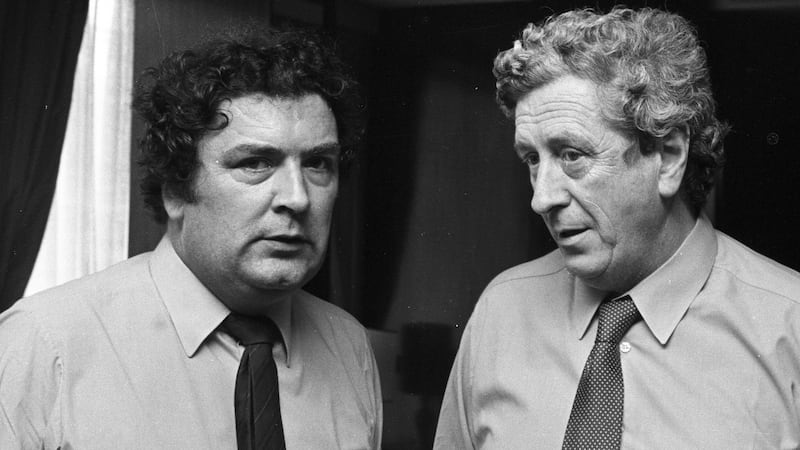
The lack of “positive contribution and the apparent lack of interest in the general welfare of Northern Ireland . . . led many Protestants to believe that the Northern Catholic is politically irresponsible and immature and unfit to rule”, Hume wrote. The “dangerous equation of Nationalism and Catholicism” had silenced dissenting voices and preserved “a fixation about religious division. Disagreement with or criticism of the Nationalist approach inevitably bring down upon one’s head a torrent of abuse: obsequious, crawling, Castle Catholic, West Briton . . .” Unionism must end discrimination. But nationalists should accept “the constitutional position”, membership of the UK, and work without resentment within the unionist-dominated system.
In later years, Hume was often accused by unionists, and some within British and Irish governments, of becoming steadily more green. He could hardly have become less so. In 1969, as the would-be reformist unionist Terence O’Neill vainly called an election in the hope it would restore his splintered government, Hume stood on a platform which nowhere mentioned nationalism. He won his Stormont seat by more than 3,000 votes over McAteer, the doyen of Derry politics. Hume’s slogan was the brash “Let’s face it, Eddie’s past it.”
His manifesto promised “a new political movement based on social democratic principles, committed to the ideal that the future of Northern Ireland should be decided by its people”, another challenge to the central dogma of anti-partitionism, unification.
The early iconoclasm dimmed. Unionists who made little effort to rid their own politics of bigotry liked to paint him as an old-fashioned sectarian nationalist in social democratic disguise. Some nationalists, muted but not reconciled when he became a major figure, never forgave his early tilt at tribal pieties. Hume’s trademark caution was decried as reluctance to confront authority, the SDLP derided as the “Stoop Down Low Party”, the “Stoops”, the nickname taken up by republicans later glad to enter politics on his coat-tails and mouthing language he coined.
But Hume was indeed slow to join protests which much of nationalism validated. The October 5th, 1968, march on Derry’s Duke Street when Gerry Fitt, later the first SDLP leader, had his forehead bloodied by a police baton, was the moment when the civil rights campaign made a major impact on British and international opinion. Hume’s first biographer Barry White noted that with the replacement of Derry Corporation by a government commission 48 days after the October march, the nationalist community had made greater gains than in the previous 47 years.
Hume had argued the route was provocative, though later he said he had been in the crowd. Fitt and others denied this, or said he had been at most an observer.
Nor was he among the organisers of the march on Bloody Sunday in January 1972, when paratroopers fired into the crowd and fatally injured 14. Hume told several biographers that, full of misgivings about the outcome, he waited at home, then made phone calls for relatives of the wounded and dying. The following day he told an RTÉ crew on the walls of the city, pointing down to the Bogside: “Many people down there feel now that it’s a united Ireland or nothing”. Unionists used the statement for decades to depict him as an irredentist nationalist.
By then, he was the most considerable figure in the SDLP, formed two years previously.
1972 brought the highest death toll of the Troubles: 497 people killed, almost 5,000 injured, about 2,000 explosions, an average of about 30 shootings per day. Senator Paddy Wilson, Fitt’s close friend, was stabbed to death by loyalists. The fledgling party flailed around. Sometimes they urged forbearance, at others resorted to walkouts. Hume, with fellow SDLP founder Paddy Devlin, tried at one point to help end an IRA hunger strike in Crumlin Road jail, and in the hope of promoting a ceasefire acted as intermediaries for the secret talks in 1972 between British secretary of state Willie Whitelaw and an IRA delegation containing the young Gerry Adams and Martin McGuinness.
From the outset, Fitt chafed against Hume's greater impact outside the North.
From the early civil rights days, Hume, like a number of others, shone on television and in interviews with foreign journalists – Hume helped by fluent French from a Paris stint as seminarian. In a society accustomed to unionist domination of the media, the talent in the civil rights ranks cheered Catholics and unnerved Protestants. While unionism continued to splinter, with the DUP emerging in 1971, the early SDLP made friends in the Dublin media and beyond.
From the outset, as by far the more experienced electoral politician, Fitt chafed against Hume’s greater impact outside the North. By the time the Sunningdale negotiations produced a power-sharing executive in 1974 and a plan for a council of Ireland, the original strains between the SDLP founder-members had brought it close to splitting. Fitt and Devlin agreed with Conor Cruise O’Brien that the council would be impossible for Brian Faulkner to sell to unionism.
All three disliked Hume’s partnership at Sunningdale with FitzGerald, the Dublin foreign minister of the day, which saw the council idea triumph. When the loyalist strike brought down the executive in May 1974, Hume blamed Harold Wilson’s government for weakness towards the strikers. Fitt and Devlin blamed Hume for demanding too much. He had enjoyed his four-and-a-half month stint as minister for commerce, particularly a trip to the US to lobby for investment in Northern Ireland.
Formidable
Maurice Hayes, by his own engaging account, brought into Stormont to help service the new administration because he was an adroit Catholic, later became a close Hume friend but viewed him more dispassionately at first. He recalled a unionist civil servant confessing disappointment that Hume the minister was no different from “the last guy”. Hayes thought Hume “rather conservative, but formidable: one of the best drafters I have come across, with a great capacity to envelop conflicting concepts in language of Delphic luminosity.”
It was Hayes who drafted a speech Hume made in the US, which, as he noted, contained the first appeal to Irish-Americans by an elected Irish politician not to give money to the IRA: “Ask yourself whether you would throw a bomb or pull a trigger, for that is what your dollar will do.” Even then, Hayes noted, Hume had access to American politicians and media enjoyed by no other northerners.
The fall of the executive had a major effect on Hume’s thinking, as on many nationalists. The spectacle of police standing idly by as men with cudgels blocked and redirected traffic and of London conceding to a loyalist front which united respectable politicians with paramilitaries reinforced the belief that Britain would always have to be chivvied, and that an “internal settlement” based narrowly on devolution, however disguised, could never mean anything but restored majority rule.
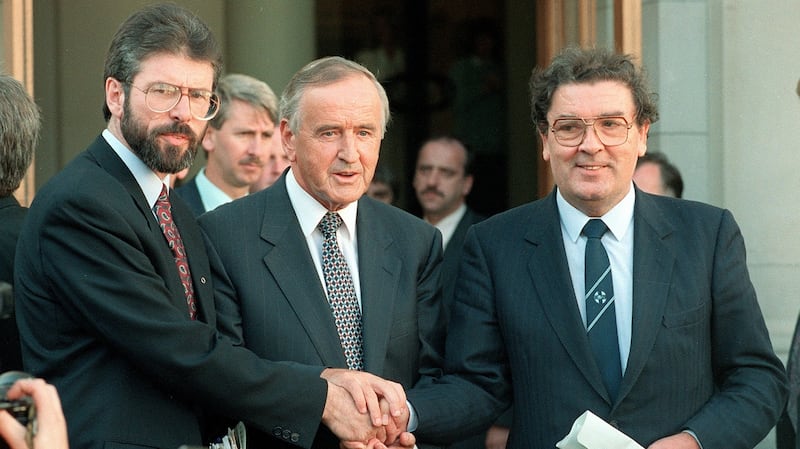
Hume had invested heavily in Sunningdale, and was exasperated to the point of fury by unionist leaders who relied on superior numbers and refused negotiations. Bill Craig, Harry West, Ian Paisley, and later Jim Molyneaux did not seem to him to be serious politicians. The charge that he became contemptuous of them had some force, but the accusation that he failed to “reach out to unionism” ignored his repeated efforts to find solutions that would “be unfair to nobody”.
In the bleak years after the loyalist strike, with violence claiming almost 600 lives in 1975 and 1976, he re-focused on “transcending” narrow Northern Ireland, built up his US connections and developed contacts in Europe, at first thanks to a job made for him in the office of Richard Burke, Ireland’s commissioner for consumer affairs.
He stood in the first elections to the European Parliament and was runner-up to Ian Paisley with 140,000 first-preference votes. That October, Fitt resigned as SDLP leader. Hume replaced him, formalising a dominance long recognised inside and outside the party.
The hunger strikes of 1980 and 1981 envenomed the breach with Fitt, and with Devlin, who had left the party earlier. As both became marginal, they denounced Hume for ditching the SDLP’s original pretension to socialism, accused him of covert support for republican aims and muting criticism of IRA atrocities. Unionists and some Conservatives relished the claims, but Hume’s prestige continued to grow.
The strains in the leadership of the SDLP reflected its foundation by ambitious individuals, the long periods when the North lacked a political forum feeding individualism that paradoxically helped the SDLP subsist around barons with their own fiefdoms: Eddie McGrady in South Down, Seamus Mallon in Newry-Armagh. The seeds of relegation by Sinn Féin were sown long before Northern nationalists became a different, more assertive community.
Hume’s relationship with his deputy leader, Mallon, was often difficult, not helped by interaction with the rivalry between Charles Haughey and FitzGerald. In the 1983 hearings of the New Ireland Forum, when nationalism publicly examined its conscience and programme, Mallon backed Haughey in the demand for a unitary state, while Hume kept options open in increasingly opaque language. Though much closer to FitzGerald, he was still able to work with Haughey during the first years of the peace process. His maxim was that the SDLP should be able to deal with any Dublin government. But as from the start, his contacts in Dublin, London and the US were personal.
In the gruelling months before the first IRA ceasefire, Hume faced a barrage of abuse and near-hatred from unionists, Conservative politicians and British officials, and from some of Dublin's political and media elite.
The New Ireland Forum was intended to shore up the SDLP against the emergent Sinn Féin, its fortunes determined to a large degree by the H-Block hunger strikes of 1980-81. The SDLP struggled in vain against the emotions of a community stirred to a new height of anti-British government fervour by the Thatcher government’s determination to withstand the strike. In 1983, Hume won a Westminster seat for the first time. So did Adams, in part because Fitt ran in West Belfast as an independent but largely because of the hunger-strike effect.
Throughout the 1980s, Hume’s prestige abroad and authority at home sustained the party’s vote; foreign travel simultaneously draining him and maintaining at least the illusion of influence. The groundwork for the Anglo-Irish Agreement in 1985 and the strategy that produced it was substantially the work of subtle minds in Dublin’s Department of Foreign Affairs: Dermot Nally, Donlon, Michael Lillis, Noel Dorr. Without Hume to persuade journalists and drum up support in Washington, the concept would have had much less force.
As the decade went on he became visibly and audibly worn, open about his depression, increasingly describing it as burn-out. Given the value of his international profile, it was unreasonable to complain that he travelled too much. A more substantial charge was that he appointed party organisers, then undercut them. The search for peace to which Hume devoted the last 10 years of his leadership overtook a party already in trouble at its organisational roots.
In the gruelling months before the first IRA ceasefire and especially after the IRA Shankill Road bomb in October 1993, Hume faced a barrage of abuse and near-hatred from unionists, Conservative politicians and British officials, and from some of Dublin’s political and media elite. He liaised erratically with the Irish government, where there were frazzled nerves as he grew ever more strained and impatient. He told the London Independent that the Shankill bomb had “shattered me totally . . . but we have had 20,000 soldiers on our streets, armed policemen, legislation, and none of it has succeeded’ in ending violence. ‘Surely to God it must be my duty to try’.”
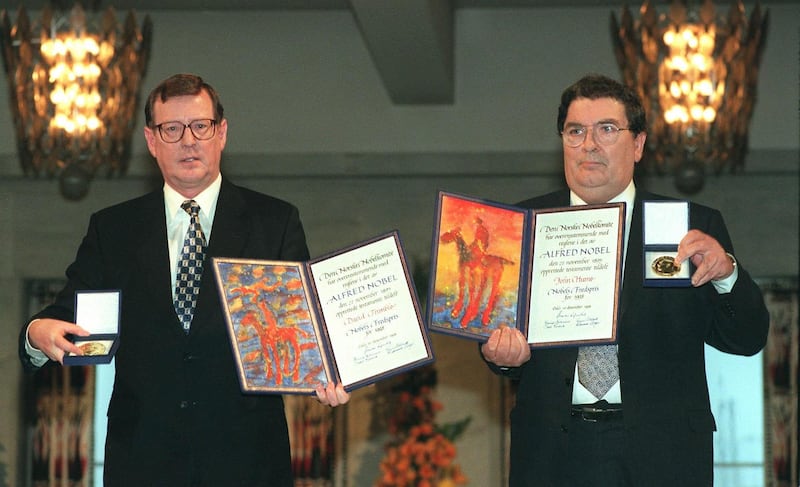
As the vilificdation reached a peak, he collapsed with strain and was hospitalised. Phone calls to taoiseach Albert Reynolds accused Dublin of betraying him, letters to the hospital from all over Ireland brought congratulations on his efforts, and hopes for a swift recovery.
In 1998, after all-party negotiations at last produced the Belfast Agreement, Hume and David Trimble jointly received the Nobel Peace Prize.
But he subsequently had major abdominal surgery in Austria, with repeated operations inside a short period. Pat Hume in 2014 told the Irish News that thereafter he had a steadily worsening problem with memory and concentration.
In February 2004, he announced that he would not stand in that year’s election to the European Parliament, and retired from active politics. The SDLP’s collapse became unmistakable in June when the party’s nominee lost the seat Hume had held since the first European Parliament election in 1979. It was a sad postscript to a remarkable career.
In 1992, he had said he imagined Britain would remain in Northern Ireland for the foreseeable future, but that some new all-Ireland arrangement would evolve. “Unity I’ve always defined as agreement, not a takeover bid. Once people start working together you grow into a completely new Ireland – and two or three generations down the road, you create new structures that give expression to what has happened.”
For the old Utopia of a united Ireland, Hume substituted an “agreed Ireland”. There may never be another leader who captures the hopes of Northern Catholics across the widest range and shows them to the world in the best possible light, as he did for 30 years.
He is survived by Pat and their children Terese, Áine, Aidan, John and Maureen.

















